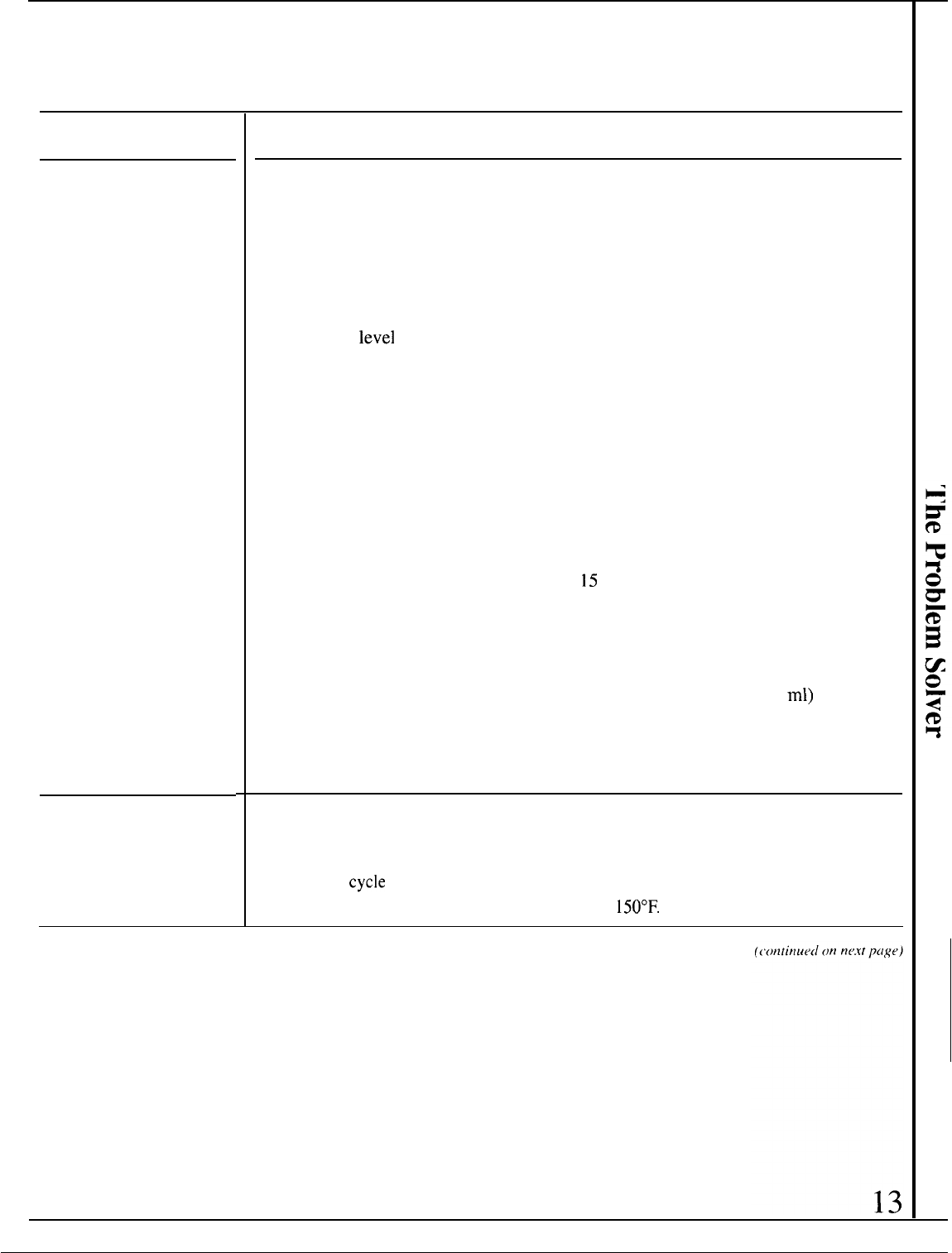
PROBLEM
SPOTS AND
FILMING ON
GLASSES AND
FLATWARE
CLOUDINESS ON
GLASSWARE
POSSIBLE CAUSE AND REMEDY
Spotting can be caused by all these things:
●
●
●
●
●
●
●
●
Extremely hard water. (See page 6.)
Low inlet water temperature. (To test, see page 6.)
Overloading the dishwasher.
Improper loading. (See pages 8 and 9.)
Old or damp powder detergent.
Phosphate
level
in detergent too low. (See page 6.)
Rinse agent dispenser empty. (See page 6.)
Too little detergent. (See page 7.)
Local water conditions and personal preferences vary. Try several brands of detergents
to find one that gives the best results for you. A liquid dishwasher detergent may help
reduce filming.
To remove stubborn spots and film from glassware:
1.
Remove all metal utensils from the dishwasher.
2. Do not add detergent.
3. Select POTS & PANS cycle.
4. Start the dishwasher and allow to run for
15
to 20 minutes. The dishwasher will
now be in the main wash.
5.
Then open the door and pour 2 cups (500 ml) of white vinegar into the bottom of
the dishwasher.
6. Close the door and allow to complete the cycle.
If vinegar rinse doesn’t work:
Repeat as above, except use 1/4
cup (60
m})
of citric
acid crystals instead of vinegar. (Most drugstores carry citric acid crystals. If yours
doesn’t, call GE Factory Service.)
Using a vinegar or citric acid crystal rinse more than twice a month? Consider a
home water softener.
If
vinegar or citric acid crystal rinse doesn’t work, the cloudiness is “etching.”
The film cannot be removed.
It
can be prevented:
Use less detergent if you have soft water. Wash glassware in
the shortest
cycle
that will get them clean.
Water temperature entering dishwasher exceeds
150°F.


















